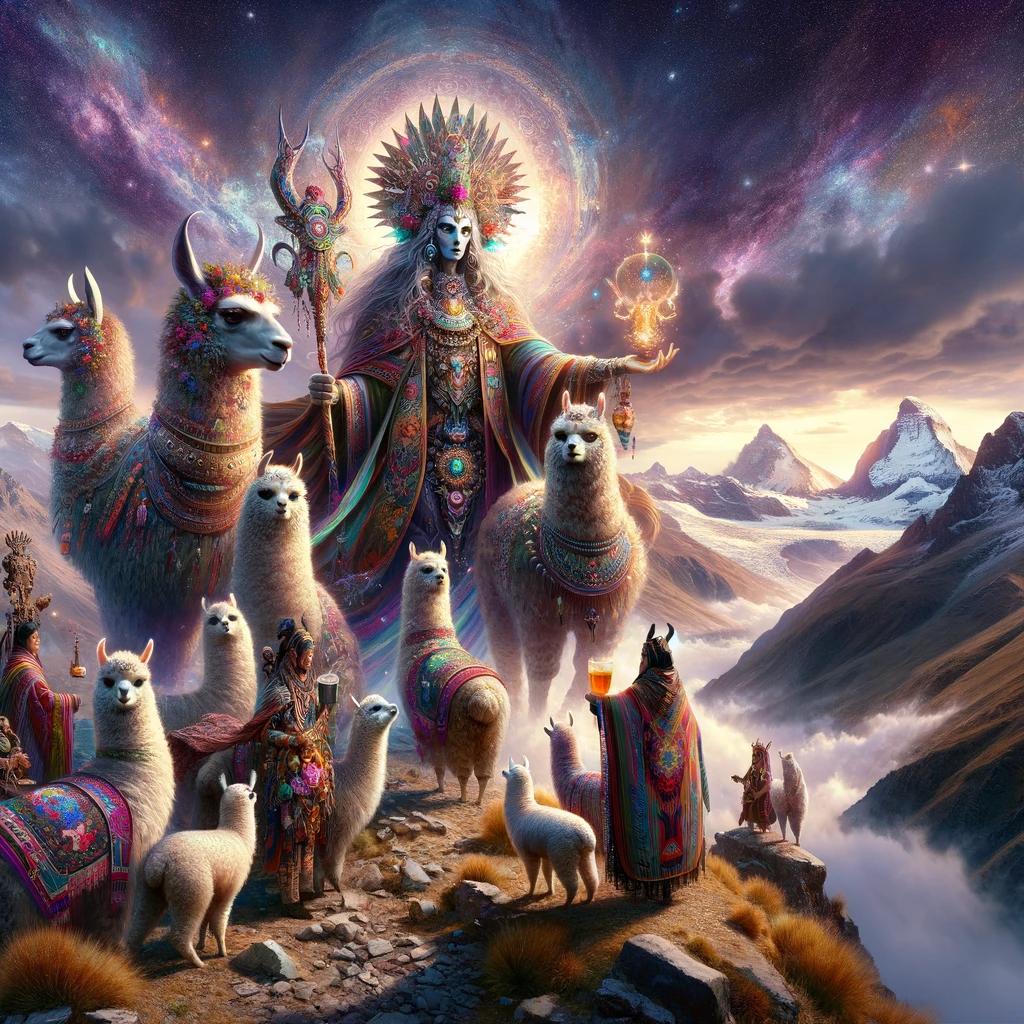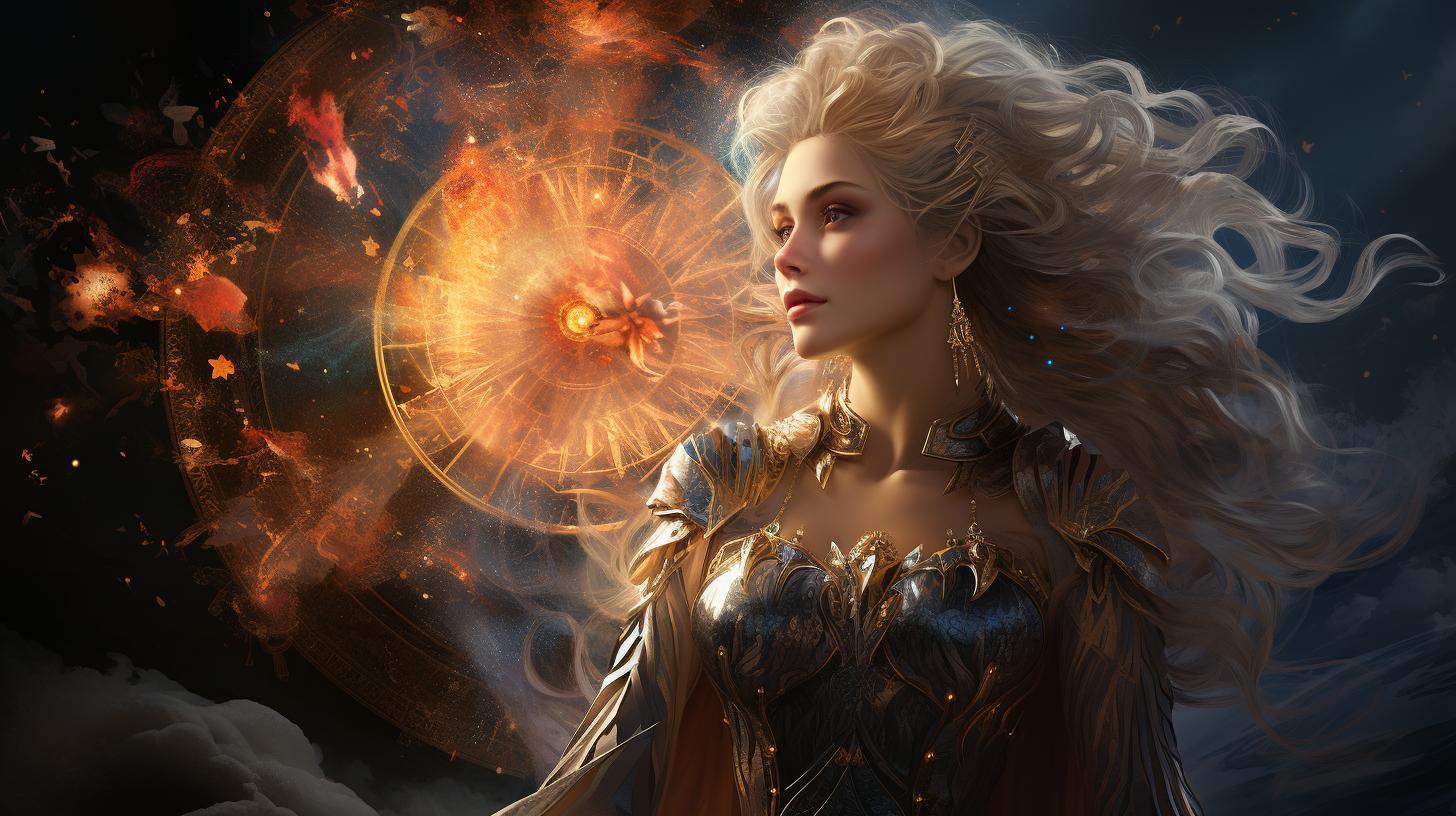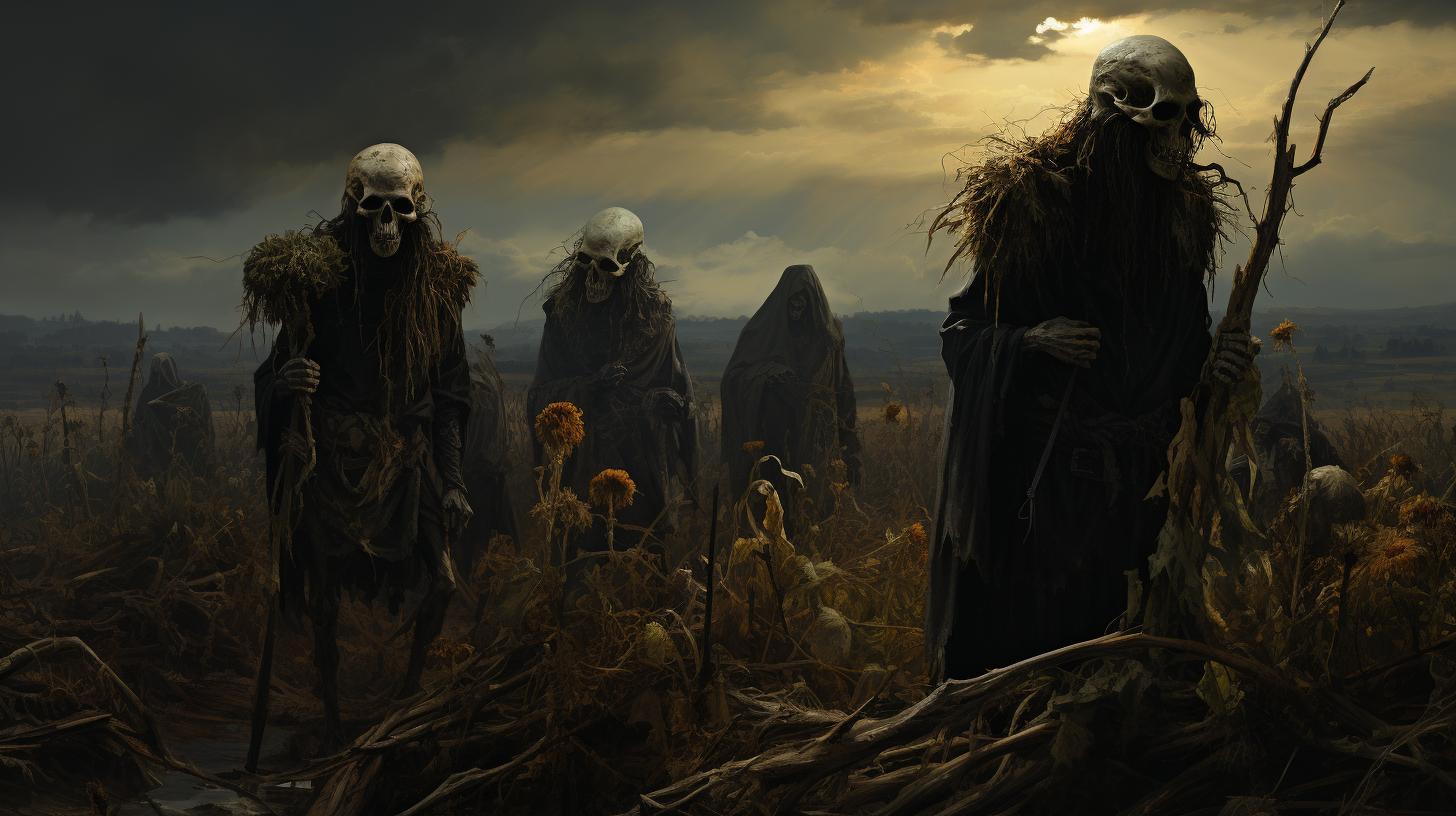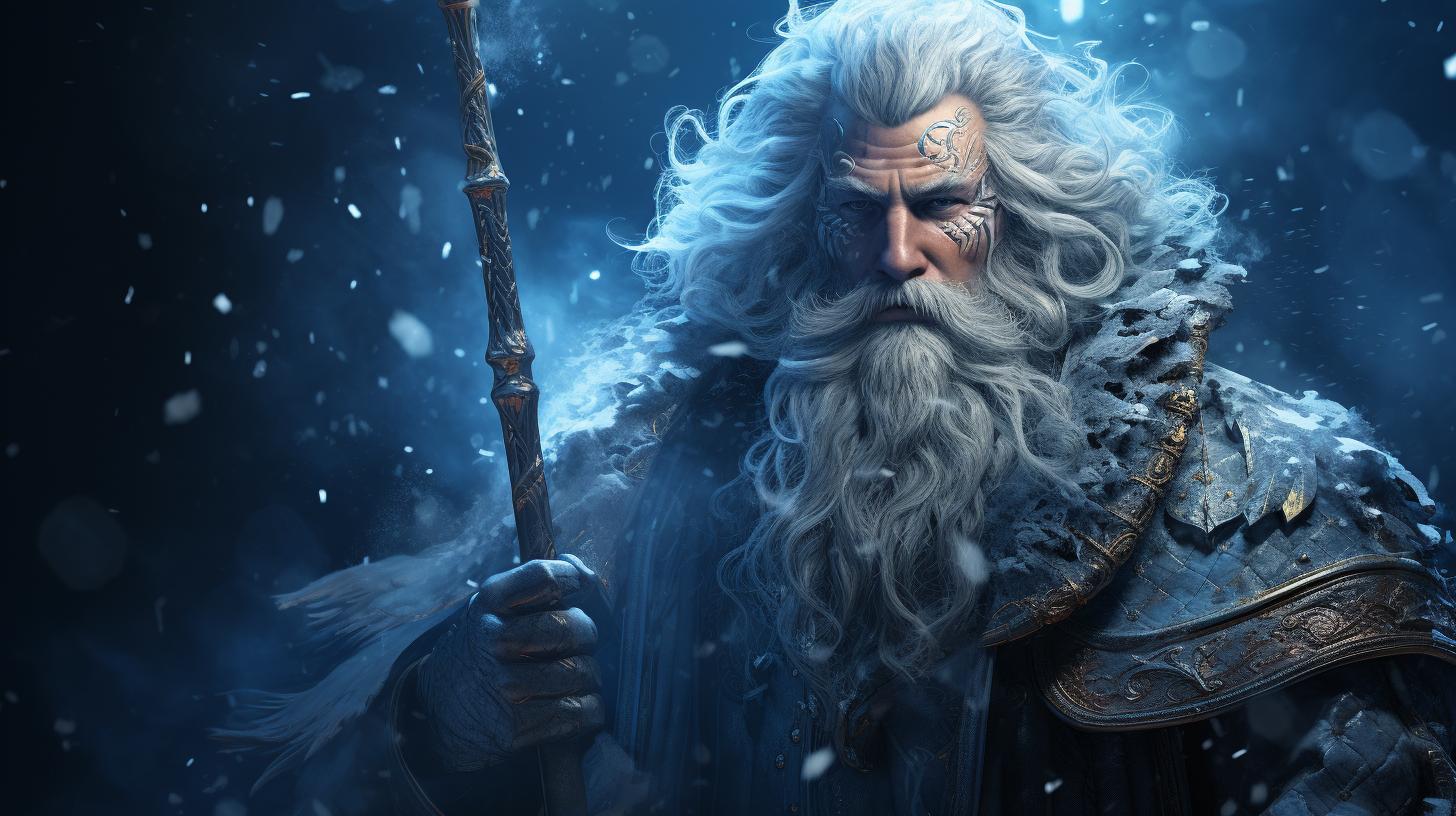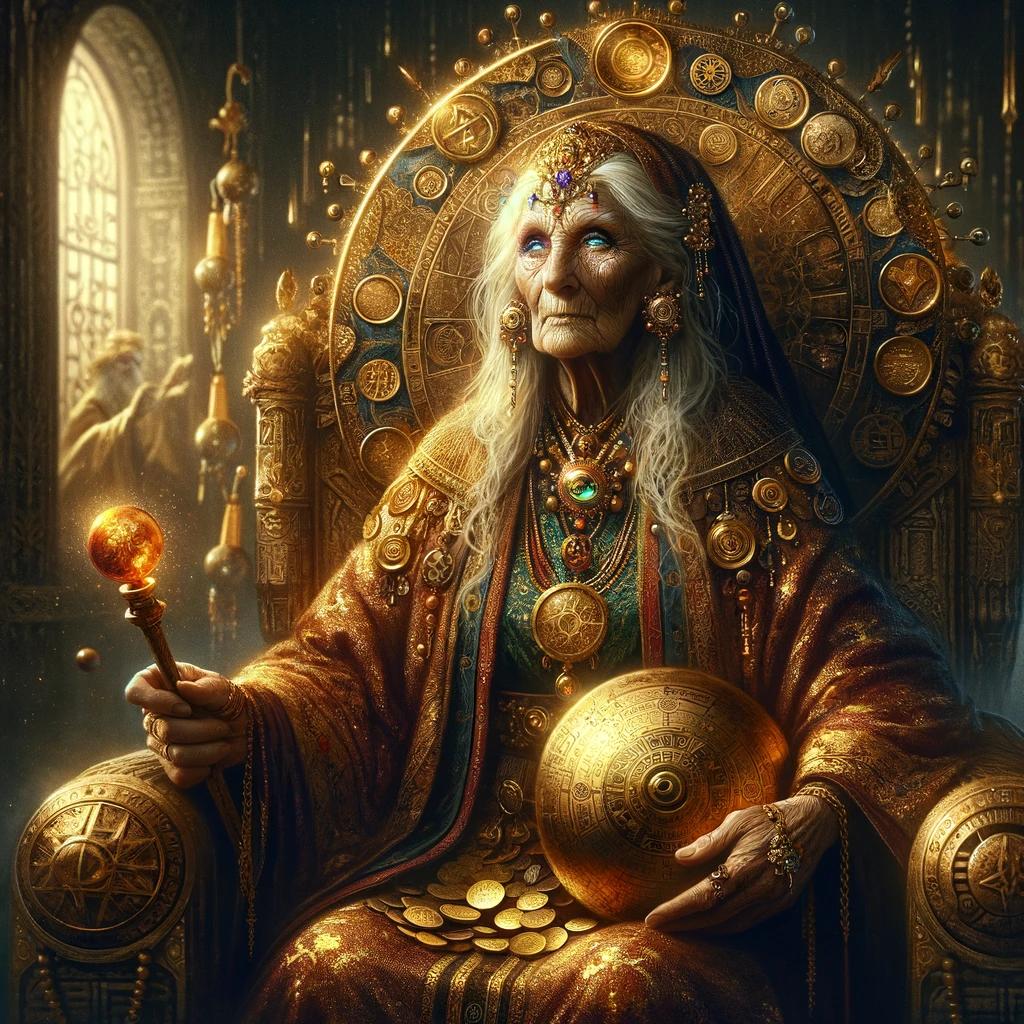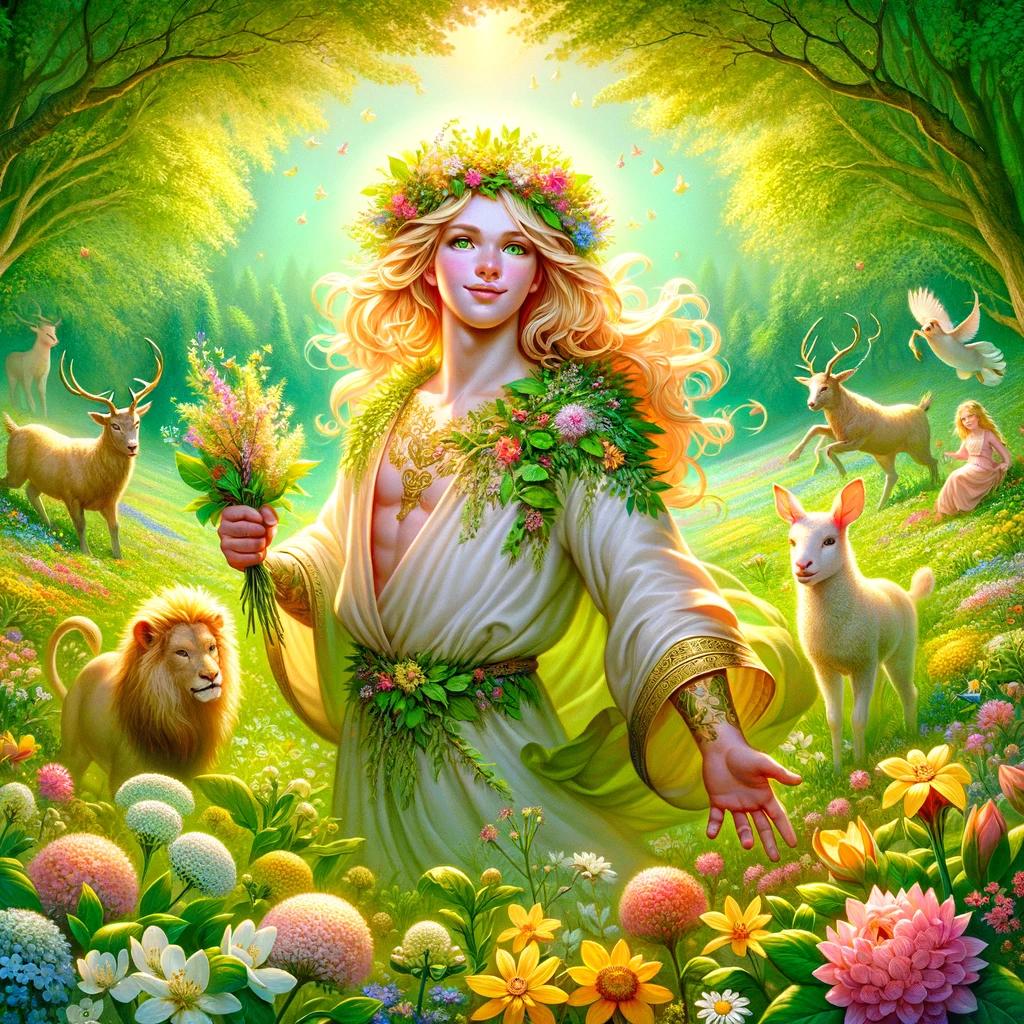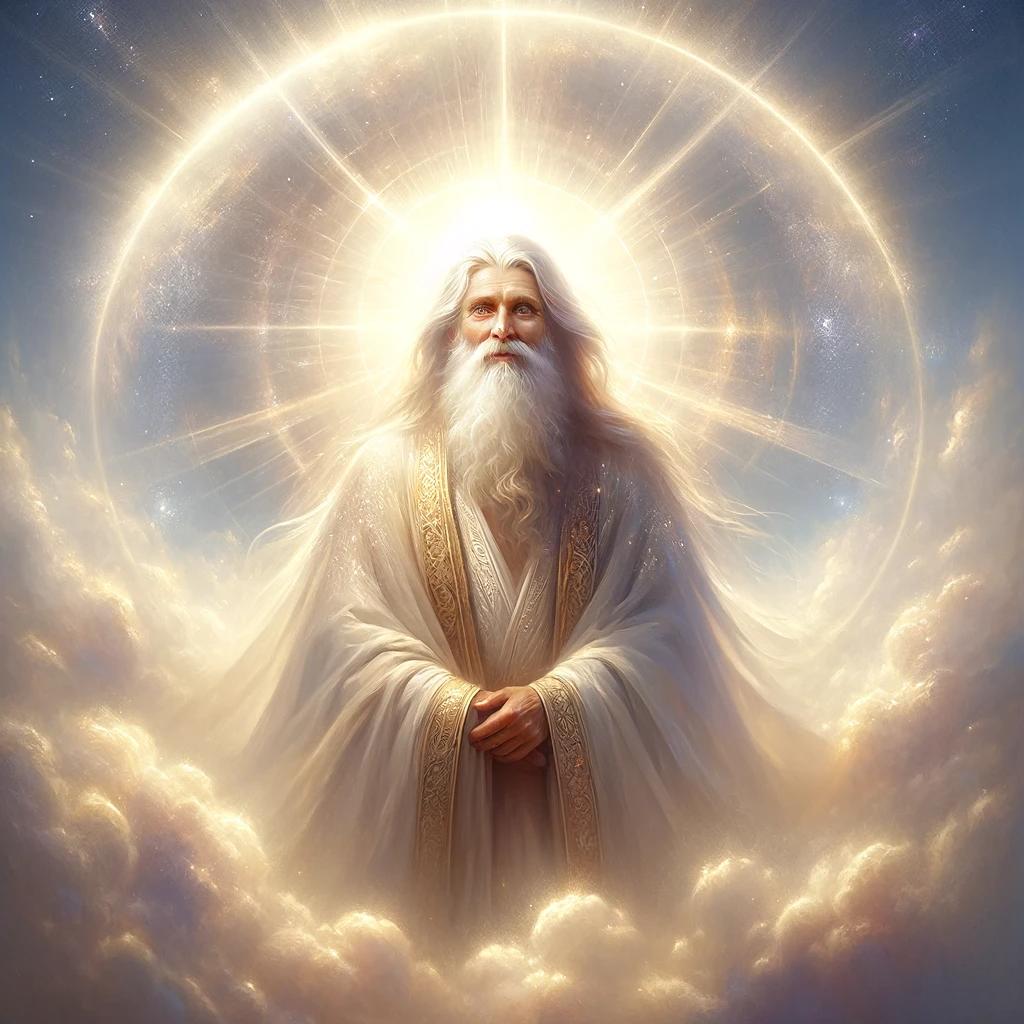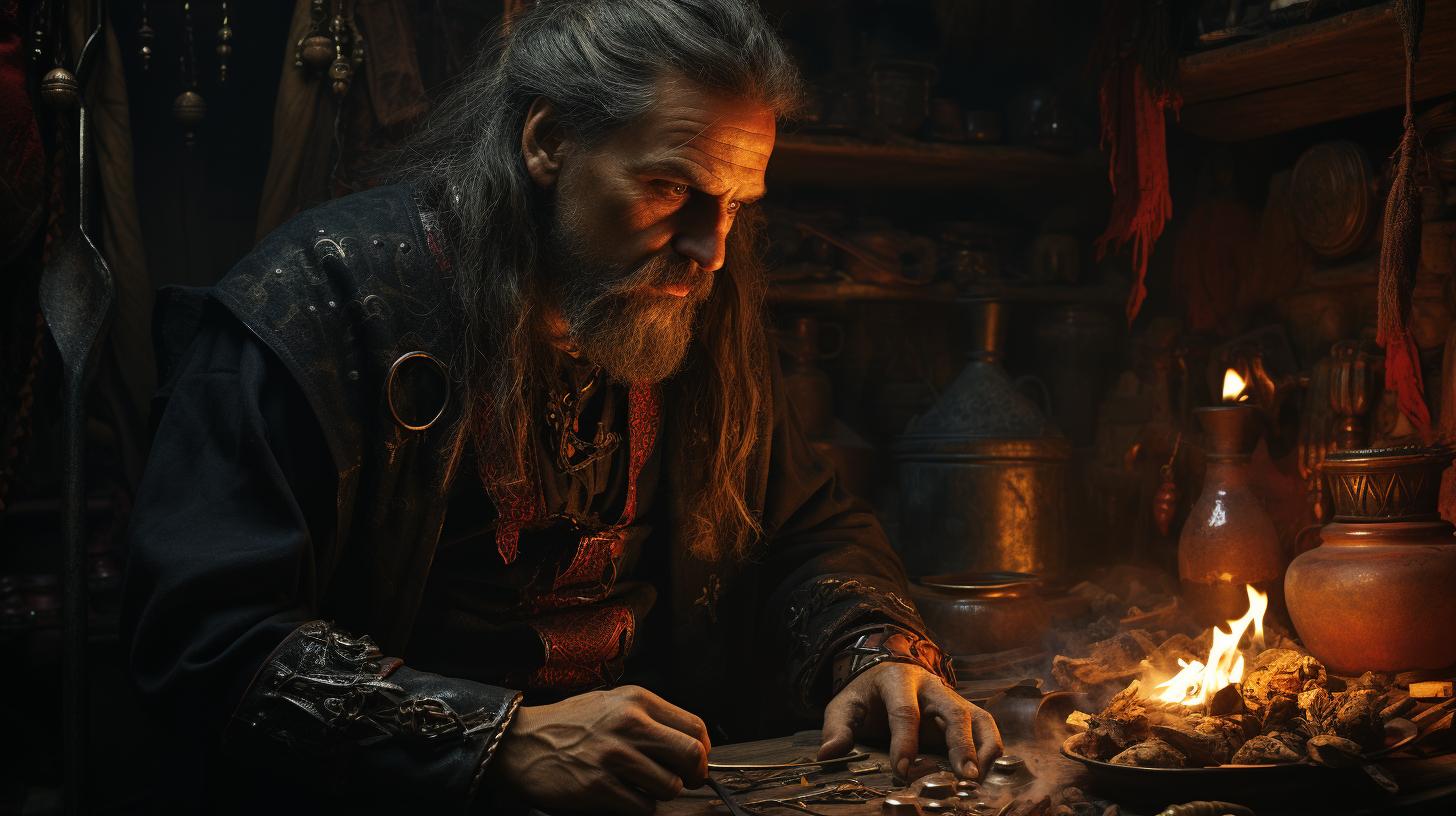Slavic Goddess Mara: Unveiling the Mysteries of the Divine Being
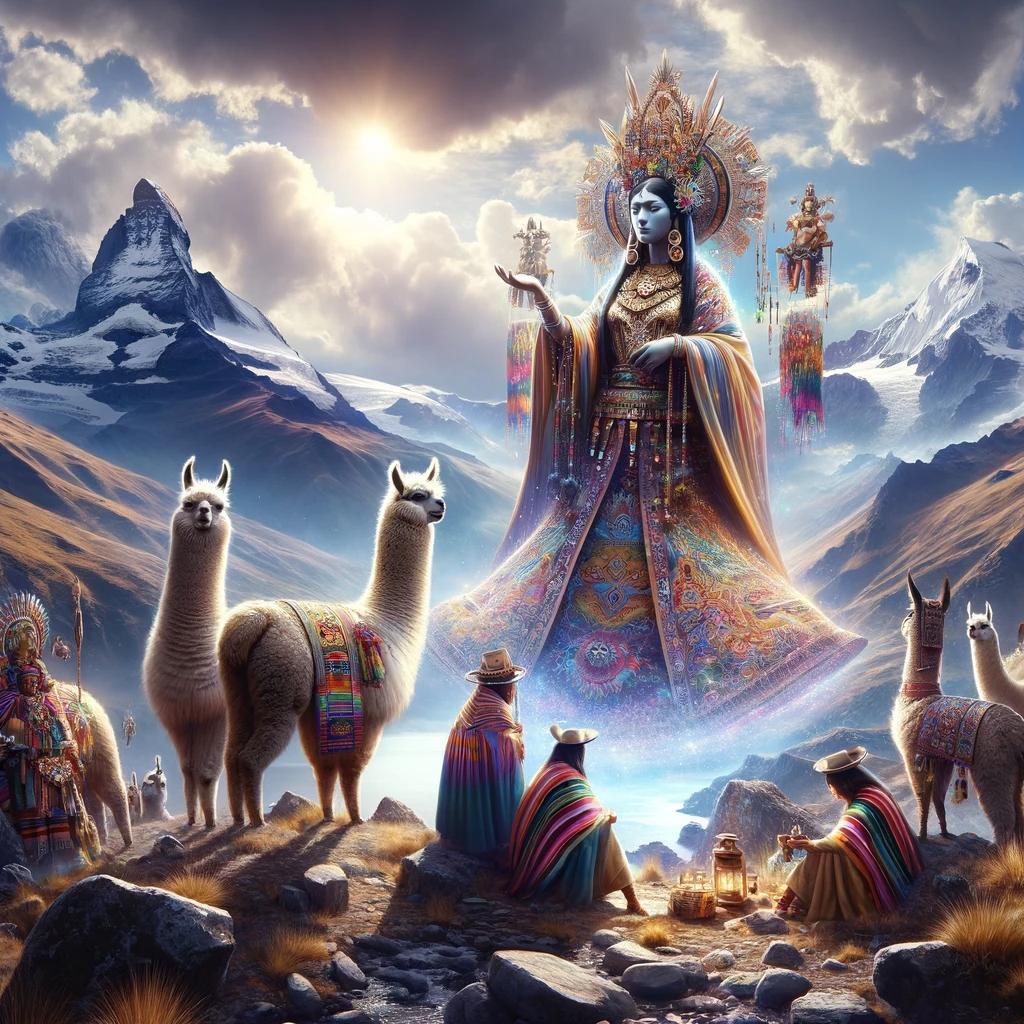
Slavic Goddess Mara, a prominent figure in Slavic mythology, holds a fascinating place in the realm of gods and folklore. With deep roots and rich cultural significance, Mara represents the enigmatic and powerful forces associated with winter, death, and rebirth.
Throughout history, she has been depicted in various forms, symbolizing the transition from darkness to light. From the origins and rituals associated with Marzanna to the Indo-European connections, the exploration of Mara’s mythology offers a captivating journey into the winter realm.
Join us as we unravel the mysteries surrounding Slavic Goddess Mara.
Understanding Slavic Goddess Mara
Slavic Goddess Mara is a fascinating figure with deep roots in mythology and folklore. Through the exploration of her origins, significance in Slavic mythology, and cultural representations and symbols, we can gain a deeper understanding of this enigmatic deity.
Origins and History
The origins of Slavic Goddess Mara can be traced back to ancient times. While her specific origins are shrouded in mystery, she is believed to have emerged from the depths of Slavic culture and mythology.
With connections to nature, seasons, and the cycle of life and death, Mara’s history is intertwined with the beliefs and traditions of the Slavic people.
Significance in Slavic Mythology
Mara holds great significance in Slavic mythology, representing various aspects of the human experience. As the goddess of winter, she embodies the cold, darkness, and the passing of time. In some tales, Mara is associated with death and rebirth, serving as a guide in the transition between life and the afterlife.
Her role in mythology reflects the deep reverence and understanding of the cyclical nature of existence among the Slavic people.
Cultural Representations and Symbols
Throughout Slavic culture, Mara is represented through various symbols and cultural practices. She is often depicted as a veiled woman, embodying the mysterious and ethereal aspects of her nature. The color white is closely tied to Mara, symbolizing purity, winter, and the blank canvas from which new life emerges.
Other symbols associated with Mara include snowflakes, owls, and the moon, each carrying their own significance within the Slavic mythology.
By delving into the origins, significance, and cultural representations of Slavic Goddess Mara, we can gain a deeper appreciation for her role in Slavic mythology and the profound impact she has had on the belief systems and cultural practices of the Slavic people.
The Enigmatic Mara Demon
The Slavic goddess Mara is not only associated with winter and death, but she also embodies the enigmatic presence of the Mara demon. This elusive entity has long intrigued scholars and researchers, with its origins shrouded in mystery.
The Mara demon is known to visit people in their sleep, causing nightmares and sleep paralysis. These nocturnal visitations often leave individuals in a state of fear and unease, unable to move or scream.
Many cultures believe that these experiences are the work of the Mara demon, who feeds on the sleepers’ fear and negative energy.
Descriptions of the Mara demon vary across different Slavic countries.
In some regions, it is depicted as a hag-like figure with long claws and tangled hair, while in others, it takes the form of a demonic creature with glowing eyes. However, regardless of its appearance, the Mara demon is universally feared and associated with the darkness of the night.
Interestingly, the Mara demon’s connection to sleep paralysis and nightmares is not limited to Slavic folklore. Similar entities exist in other cultures as well, such as the Old Hag in English folklore and the Mora in Spanish and Portuguese traditions.
This suggests a shared human experience of these haunting phenomena.
To protect themselves from the influence of the Mara demon, Slavic people developed various rituals and amulets. This included placing garlic or certain plants, like St.
John’s wort, under their pillows, as these were believed to ward off negative entities. Additionally, reciting prayers or invoking the help of benevolent spirits was thought to offer protection against the Mara demon’s malevolent intentions.
While the existence of the Mara demon may remain a mystery, its impact on human experience and folklore is undeniable. The fear and unease associated with its visitations have left a lasting impression on Slavic cultures, reminding us of the ethereal and sometimes unsettling nature of the night.
Unveiling the Secrets of Morana Goddess
The Morana Goddess, also known as the Slavic Goddess of Winter, holds a mysterious presence in Slavic folklore. She represents the cold, dark months of the year, embodying the essence of winter and death.
Unraveling the secrets and symbolism behind Morana sheds light on the rich traditions and beliefs of the Slavic people.
The Morana Goddess is often depicted as a beautiful, yet enigmatic figure.
She is associated with the end of the harvest season, marking the transition from abundance to scarcity. In Slavic mythology, Morana personifies the forces of nature, particularly the harshness and unforgiving nature of winter.
One of the key aspects of the Morana Goddess is her connection to seasonal cycles. As winter sets in, nature enters a dormant phase, and Morana’s influence becomes more pronounced.
The frigid winds and icy landscapes are believed to be manifestations of her power.
In Slavic culture, Morana is seen as both a source of fear and respect. She is revered as a symbol of the natural cycle of life and death, reminding people of the impermanence and fragility of existence.
The rituals and traditions associated with Morana often involve appeasing her spirit and seeking her blessings for a smooth transition into spring.
Throughout history, the Morana Goddess has been represented in various cultural practices and customs.
In some Slavic regions, effigies of Morana are created using straw, cloth, and other materials. These effigies are then paraded through villages before being ceremonially burned or drowned in rivers, symbolizing the expulsion of winter and the arrival of spring.
The symbolism of Morana extends beyond the physical manifestation of winter. She also represents the inner transformation that takes place during the colder months. As people retreat indoors, they engage in introspection, self-reflection, and personal growth.
Morana’s influence encourages individuals to embrace the darkness and find renewal in the depths of winter.
By unpacking the secrets of the Morana Goddess, we gain valuable insights into the complex tapestry of Slavic mythology.
Exploring the symbolism and traditions associated with Morana allows us to appreciate the profound connection between nature, seasons, and human existence. The enigmatic presence of Morana continues to shape the beliefs and rituals of Slavic culture, reminding us of the eternal cycle of life, death, and rebirth.
Exploring the Meaning Behind “Morana”
Underneath the layers of Slavic mythology lies the enigmatic figure of Morana. Delving into the depths of her meaning and symbolism provides insight into the intricate tapestry of Slavic beliefs.
While Morana is often associated with winter, death, and darkness, her significance extends beyond these surface-level interpretations.
One aspect of Morana’s meaning lies in her role as a catalyst for transformation and renewal.
Just as winter gives way to spring, Morana represents the cyclical nature of life and the eternal cycle of death and rebirth. Her presence symbolizes the necessary process of letting go and embracing change, in order to pave the way for new beginnings.
In Slavic mythology, Morana is not simply a harbinger of death, but also a guardian of balance and harmony. She reminds us of the intricate interconnectedness of life and the need for both light and darkness.
Embracing Morana’s symbolism allows us to explore the depths of our own experiences, acknowledging both the shadows and the light within ourselves.
Furthermore, Morana serves as a powerful symbol of feminine energy and empowerment.
As a goddess associated with the feminine principle, she embodies strength, resilience, and the power to create and destroy. Morana reminds us of the inherent power within all of us, urging us to tap into our own inner strength and embrace the full spectrum of our being.
Exploring the meaning behind Morana invites us to reflect on our connection to nature and the cyclical rhythms of life. Just as the seasons change, so do the phases of our own existence.
Morana serves as a timeless reminder to embrace the ever-changing nature of our lives, finding beauty and wisdom in each transition.
Whether we view Morana as a mythological figure or a metaphorical representation, exploring her meaning offers a gateway to understanding the rich tapestry of Slavic folklore and the profound connection between humanity and the natural world.
The Mythology and Folklore of Marzanna
Marzanna’s Role in Slavic Traditions
The significance of Marzanna in Slavic traditions cannot be overstated. As a prominent figure in mythology, Marzanna represents the end of winter and the arrival of spring. It is believed that Marzanna, often depicted as a goddess or a doll-like figure, holds the power to purge the land of winter’s grip and bring forth new life.
In Slavic folklore, Marzanna is revered as both a deity and a symbol of hope. She embodies the cyclical nature of the seasons, symbolizing the constant cycle of birth, growth, death, and rebirth.
Her presence in rituals and customs demonstrates the deep-rooted belief that by bidding farewell to winter, people can welcome the arrival of spring and the rejuvenation it brings.
Marzanna in Polish and Russian Customs
Marzanna’s impact on Polish and Russian customs is profound.
In Poland, the end of winter is celebrated through the symbolic drowning of Marzanna. Effigies of Marzanna, often made from straw, twigs, or other natural materials, are created and paraded around town.
These effigies are then ceremonially thrown into rivers or water bodies, symbolizing the cleansing of winter and the renewal of life.
Similarly, in Russia, Marzanna is known as “Morena” or “Morana.” The burning of straw effigies or the breaking of ice sculptures that represent Morena is a common sight during the celebration of Maslenitsa, a traditional Russian festival marking the end of winter.
These customs are rooted in the belief that by symbolically destroying Morena, people can banish the harshness of winter and welcome the warmth and fertility of spring.
The March Drowning of Marzanna Ritual
The March drowning of Marzanna ritual holds deep cultural significance in Slavic communities.
The act of casting the effigy of Marzanna into water is seen as a collective farewell to winter and the embracing of the coming season.
During this ritual, people gather near rivers or other water bodies, carrying the effigy of Marzanna.
They sing songs, recite prayers, and perform symbolic actions to bid farewell to winter. And when the moment arrives, the effigy is tossed into the water with hopes of washing away the cold and darkness, making way for the warmth and light of spring.
Connecting Mara with Water in Slavic Traditions
In Slavic traditions, water is deeply intertwined with the goddess Mara. Water holds a significant role in the mythology and rituals associated with Mara, symbolizing purification, transformation, and the cyclical nature of life.
The association between Mara and water can be traced back to the ancient belief in the power of natural elements. Water, with its ability to flow, adapt, and change its form, represents the fluidity and ever-changing nature of Mara herself.
One of the most prominent connections between Mara and water is observed in the ritual of Marzanna, where a doll or effigy representing winter is submerged in water. This act symbolizes the dissolution of the cold winter season, purifying and cleansing the land in preparation for the arrival of spring.
Moreover, water is also present in the myths and folklore surrounding Mara’s role as a guardian of dreams and sleep. In Slavic folklore, it is believed that Mara could enter the dreams of individuals and influence their subconscious thoughts.
The presence of water in dreams represents the connection between Mara and the dream realm, serving as a gateway to otherworldly experiences.
In addition to her association with dreams, Mara is also linked to bodies of water such as rivers, lakes, and wells.
These water sources are seen as portals to the spirit world, where Mara can be invoked or sought for guidance and protection.
Through the connection with water, Slavic traditions recognize the deep spiritual significance of Mara as a goddess of change, transformation, and purification.
The element of water serves as a symbolic bridge between the earthly realm and the divine, allowing individuals to connect with Mara’s power and energy.
As we delve deeper into the significance of water in Slavic traditions, we begin to understand the profound relationship between Mara and the fluidity of life, reminding us of the constant flow of change and renewal that exists within ourselves and the world around us.
The Rituals and Traditions Associated with Mara
Mara’s connection to winter and death is deeply rooted in Slavic mythology. It is believed that during the winter months, Mara’s presence becomes more prominent as the darkness descends and nature rests.
She personifies the cold, harsh conditions of winter, symbolizing the inevitable cycle of life and death.
Mara’s Connection to Winter and Death
In Slavic traditions, Mara is associated with the dormant period of the year when vegetation ceases to grow and the land becomes barren. This time is seen as a necessary phase, allowing nature to replenish its energy and prepare for the awakening of spring.
Mara’s role as the goddess of winter and death highlights the importance of embracing these seasons in the natural cycle of life.
During the winter months, various rituals and customs are performed to honor Mara’s presence. People engage in activities such as wearing masks, singing songs, and creating effigies representing Mara or her manifestations.
These rituals serve as a way to acknowledge and respect the power and influence of the slavic goddess in the winter season.
The Transition from Winter to Spring
As the cold grip of winter loosens its hold, Mara’s influence shifts towards the transition from winter to spring. This period marks the beginning of a new cycle, where the slavic goddess represents the rebirth and renewal of life.
The rituals associated with this transition often involve symbolically bidding farewell to the winter season and welcoming the arrival of spring.
One prominent tradition linked to this transition is the March Drowning of Marzanna, where a straw effigy representing Mara or her manifestation, Marzanna, is created and then submerged in water.
This act symbolizes the cleansing and purification of winter, making way for the blooming of new life in the coming spring. The procession that accompanies this ritual further emphasizes the collective celebration of the changing seasons and the anticipation of brighter days ahead.
Throughout Slavic folklore, the rituals and customs associated with Mara reflect a deep connection to the natural world and its cycles. They serve as a reminder of the ever-changing nature of existence and the importance of embracing both the darkness and the light in our lives.
The Symbolic Procession of Marzanna
The Symbolic Procession of Marzanna is a captivating part of Slavic folklore, entwined with ancient rituals and rich symbolism. This tradition revolves around the creation and ceremonial disposal of an adorned effigy, representing the goddess Mara or Marzanna herself.
The Adorned Effigy and its Significance
At the core of the Symbolic Procession of Marzanna is the creation of a meticulously adorned effigy. This effigy, often made of straw, fabric, or other natural materials, is crafted with careful attention to detail and symbolism.
The effigy represents Marzanna, the goddess associated with winter and death. It serves as a vessel for the release of negative energy and the transition from the cold winter season to the rejuvenating warmth of spring.
Each element included in the effigy carries its own meaning. The straw represents the remnants of the dying winter, while colorful ribbons and flowers symbolize the upcoming rebirth and the vibrant energy of spring.
The effigy is often adorned with jewelry, mirrors, and other small trinkets, believed to reflect away any lingering darkness.
Celebrating the End of Winter
The procession itself is a joyous community event, typically held near the end of winter. People gather together, often dressed in traditional attire, to accompany the adorned effigy in its symbolic journey.
The procession begins in a central location, usually a village square or a prominent natural landmark. Participants, carrying the effigy on a pole or in their hands, march through the streets in a festive parade.
Music, dance, and chants fill the air, creating a vibrant atmosphere of celebration and anticipation.
As the procession makes its way through the community, it symbolizes the triumph of light over darkness, life over death.
It represents the collective desire for the harsh winter to come to an end and the hope for a fruitful and prosperous spring ahead.
Once the procession reaches its designated endpoint, often a body of water such as a river or a lake, the effigy is ritually disposed of.
This act signifies the final farewell to winter and the purification of the community, as the effigy is released into the flowing water, carrying away any remaining negative energy.
The Symbolic Procession of Marzanna offers a profound connection to Slavic mythology, the changing seasons, and the shared experience of the community.
It serves as a powerful reminder of the cyclical nature of life and the eternal struggle between darkness and light.
Discovering the Indo-European Roots of Mara
The origins of Slavic Goddess Mara can be traced back to the ancient Indo-European cultures, where similar deities were venerated. The Indo-European connection provides fascinating insights into the roots and evolution of Mara’s mythology.
Across the Indo-European region, various goddesses embodying similar aspects as Mara can be found. In the Vedic tradition, there is Māra, associated with death and desire. The Irish goddess Mórrígan shares similarities with Mara, representing sovereignty, war, and fate.
The strong ties between these diverse goddesses suggest a shared origin and belief system among the Indo-European peoples. The concept of a winter goddess symbolizing death and rebirth appears to have been present in their shared mythology.
Looking deeper into the linguistic connections, the name “Mara” itself reflects the Indo-European linguistic heritage. It can be linked to the Sanskrit word “Maraṇa,” meaning death, and the Old Norse term “Marr,” which refers to a boundary or limit.
These linguistic connections further support the hypothesis of a shared Indo-European mythological tradition.
Exploring the Indo-European roots of Mara not only sheds light on her significance within Slavic mythology but also enhances our understanding of the broader cultural and mythological context in which she exists.
By unraveling these connections, we can better appreciate the rich tapestry of ancient beliefs and the interplay between different cultures within the Indo-European world.
Winter Personified: Mara, Morana, and Marzanna
Winter holds a mystical allure, a season when nature seems to slumber, and the world is veiled in a cold embrace.
In Slavic mythology, this season is personified by three formidable figures: Mara, Morana, and Marzanna. These goddesses embody the essence of winter, darkness, and the cyclical nature of life.
Mara
Mara, also known as Marzanna, is a Slavic goddess associated with death and rebirth. Her name translates to “the boundary” or “the edge,” representing the transition from one season to another.
In folklore, Mara is often depicted as an old woman with a wrinkled face, wrapped in a tattered shawl. She holds the power to bring about the end of winter and the arrival of spring.
Morana
Morana, another manifestation of winter, is a goddess representing death and decay. She is often depicted as a young woman with pale skin, dressed in a dark cloak. Her name derives from the Slavic word for death, symbolizing the dormant life force present in the cold winter months.
Morana carries the transformative power to shape the cycle of life, preparing the world for rejuvenation.
Marzanna
Marzanna, the third deity associated with winter, signifies the end of the cold season. She is often depicted as a straw effigy or doll, adorned with colorful ribbons and decorations. The ritualistic burning or drowning of Marzanna symbolizes the symbolic death of winter and the anticipation of spring’s arrival.
This tradition is widely celebrated in Slavic cultures, particularly in Poland and Russia.
To truly understand the essence of winter, one must delve into the mythological narratives surrounding Mara, Morana, and Marzanna.
Their personas embody the transformative power of the season, reminding us of the cyclical nature of life and the eternal cycle of death and rebirth that occurs in nature.
Exploring Nightmares and Sleep Paralysis in Slavic Folklore
Within the realm of Slavic folklore, the intriguing connection between nightmares and sleep paralysis holds a prominent place.
These phenomena have fascinated scholars and believers alike, shedding light on the mystical realms lurking in the depths of the subconscious mind.
Slavic mythology intertwines with the experiences of sleep paralysis, as it is believed that the powerful Slavic goddess Mara plays a significant role in causing these distressing episodes.
It is said that Mara, with her dark and enigmatic presence, visits households during the night, gripping individuals in a state of immobility while tormenting them with haunting nightmares.
The nightmares induced by Mara often take various forms, ranging from menacing creatures lurking in the shadows to eerie apparitions that instill fear and dread.
The sense of helplessness experienced during sleep paralysis aligns with the power that Mara wields over her victims, leaving them defenseless in the face of her influence.
These experiences are not limited to a single culture or region, as variations of sleep paralysis can be found throughout different Slavic countries.
For instance, in Poland, the phenomenon is known as “zmora,” while in Russia, it is referred to as “nochnitsa.” Despite the different names, the underlying concept remains the same: a state of temporary immobilization accompanied by vivid and terrifying dreams.
While sleep paralysis can be a distressing experience, it is important to understand that it is rooted in folklore and symbolism rather than objective reality. This folklore serves as a vessel for deeper exploration of the human psyche, as dreams and nightmares often hold profound meaning and insight into our deepest fears and desires.
Intriguingly, the connection between Mara, nightmares, and sleep paralysis prompts further contemplation on the power of the mind and the blurred boundaries between the conscious and unconscious realms. Examining these phenomena within the context of Slavic folklore provides a unique perspective into the human experience and underscores the enduring significance of mythology in our lives.
Comparing Germanic and Slavic Views on Death and Rebirth
In the realm of mythology and folklore, the concepts of death and rebirth hold significant importance. It is fascinating to explore how different cultures perceive and interpret these profound themes. In this section, we will delve into the comparative analysis between Germanic and Slavic views on death and rebirth.
Germanic mythology, including Norse mythology, portrays a complex understanding of death and rebirth. The Norse believed in a cyclical universe, with the existence of multiple worlds and realms. They viewed death as a natural part of life and emphasized the cyclical nature of existence.
Slavic mythology, on the other hand, offers a unique perspective on death and rebirth. Slavic beliefs often incorporate elements of nature and seasonal cycles. The goddess Mara, associated with the winter season, personifies the concept of death and subsequent rebirth.
While both Germanic and Slavic views acknowledge the cyclical nature of life, the emphasis and symbolism surrounding death and rebirth differ in many ways. Germanic cultures tend to focus on individual heroism and the quest for immortality, whereas Slavic cultures embrace the unity of life and death as an inherent part of the natural cycle.
Germanic mythology features prominent figures such as Valkyries, who select fallen warriors to be taken to Valhalla, a realm of honor and glory. The heroes in Germanic myths strive to attain a glorious afterlife, where they continue their warrior existence.
In contrast, Slavic beliefs emphasize the interconnectedness of existence, with death being an integral part of the ongoing cycle of life.
Slavic views on death and rebirth often center around the goddess Mara and the rituals associated with her, such as the drowning of the effigy of Marzanna.
These rituals symbolize the end of winter and the welcoming of spring, encompassing the metaphorical death of winter and the subsequent rebirth of nature.
By comparing Germanic and Slavic perspectives on death and rebirth, we gain a deeper understanding of different cultural interpretations of these universal concepts.
The contrasting emphasis on individual heroism and the interconnectedness of life and death reveals the diverse ways in which humans have sought to comprehend and make meaning of the mystery surrounding mortality and the cycles of existence.
Journeying through the Winter Realm: Finding Your Way Home
As we delve into the fascinating world of Slavic mythology, we embark upon a journey through the winter realm, guided by Slavic Goddess Mara. In this ethereal realm, where darkness and cold envelop the land, we explore the symbolic and spiritual significance of finding our way home.
In Slavic folklore, the winter realm represents a space of transition and introspection. It is a time when nature withdraws into a slumber, and the boundaries between the mortal realm and the realm of spirits become thin.
During this period, Slavic communities engage in rituals and practices that allow them to reconnect with their ancestral roots and seek guidance from the divine.
One such ritual is the procession of Marzanna, the adorned effigy that symbolizes the end of winter and the arrival of spring.
As we participate in this ritual, we symbolically release the burdens of the past and embrace the renewal that comes with the changing seasons. The effigy, adorned with rags and baubles, is ritually submerged in water, washing away the darkness and welcoming the light.
While journeying through the winter realm, we encounter the symbolism of flowers and colored decorations, representing the beauty that emerges from the barrenness of winter. These vibrant adornments serve as a reminder that even in the darkest of times, there is always the potential for growth and rejuvenation.
In Slavic mythology, the transition from winter to spring is not just a physical change but also a spiritual one. It is a time when we reflect on the cycles of life and death, and find solace in the knowledge that endings give birth to new beginnings.
By embracing the teachings of Slavic Goddess Mara, we learn to navigate through the winter realm and find our way home, both physically and spiritually.
The connection between Slavic folklore and dreams is also prominent in our journey.
Nightmares and sleep paralysis are associated with the presence of the enigmatic Mara demon, who seeks to disrupt our sleep and invade our subconscious. Exploring these dreamscape encounters allows us to gain insight into our deepest fears and desires, unlocking hidden truths about ourselves and our place in the world.
As we juxtapose the Germanic and Slavic views on death and rebirth, we uncover fascinating contrasts and similarities. While both cultures acknowledge the inevitable passage of life, Slavic mythology embraces the cyclical nature of existence, emphasizing the perpetual renewal that accompanies the changing seasons.
Through our exploration of Slavic Goddess Mara and the rituals associated with the winter realm, we discover a profound connection to our ancestral heritage and the wisdom woven within Slavic mythology.
This journey allows us to navigate the depths of the winter realm and ultimately find our way home, both metaphorically and spiritually.
Rags and Baubles: Symbolism of Winter and Death
Within the realm of Slavic mythology, the symbolism of winter and death is intricately tied to the concept of Slavic goddess Mara. Understanding the significance of rags and baubles in this context provides a fascinating glimpse into the cultural perceptions of these themes.
Rags, often representing worn-out or discarded garments, symbolize the decay and deterioration associated with winter and the cycle of life. They embody the withering of nature during the cold season, mirroring the shedding of leaves from trees and the barrenness of the earth.
In the context of Slavic mythology, these rags are often used in rituals and traditions involving the effigy of Marzanna, representing the farewell to winter and the welcoming of spring.
Baubles, on the other hand, represent the ephemeral and transient nature of life itself. These colorful trinkets and decorations are often adorned on the effigy of Marzanna, providing a stark contrast to the dullness and bleakness of winter.
They symbolize the hope and anticipation of the coming spring, infusing life and vibrancy into the season. Baubles serve as a reminder that even in the darkest of times, there is a glimmer of light and renewal.
The combination of rags and baubles in the context of winter and death signifies the duality and cyclical nature of existence. It reflects the inevitable cycle of life, where death and decay pave the way for rebirth and growth.
It also conveys a sense of acceptance and appreciation for the transient beauty that winter brings, as well as the hopeful anticipation of the rejuvenation that spring promises.
Through the symbolism of rags and baubles, Slavic mythology and folklore remind us of the interconnectedness of all aspects of life.
It teaches us to embrace the changing seasons and cycles, acknowledging that even in the darkest moments, there is beauty and potential for growth. The rags and baubles of winter and death symbolize the transformative power of nature and the human spirit, offering a profound insight into the intricate tapestry of Slavic mythology.
Wrapping up Marzanna: Flowers and Colored Decorations
As we conclude our exploration of Slavic goddess Mara and the fascinating traditions associated with her, we cannot overlook the symbolism of flowers and colored decorations in the ritual of Marzanna.
Flowers hold a special significance in the transition from winter to spring, representing the rejuvenation and rebirth that comes with the changing seasons. In the Marzanna tradition, flowers are often used to adorn the effigy of the goddess before it is ritually burned or drowned.
This act symbolizes the bidding farewell to winter and welcoming the arrival of spring.
Various varieties of flowers are commonly used in this decoration process, including daffodils, snowdrops, and crocuses. These vibrant blossoms not only add beauty to the ritual but also serve as a visual representation of the life and color that spring brings after the cold, dark winter months.
In addition to flowers, colored decorations play a key role in the portrayal of Marzanna. Colorful ribbons, fabrics, and embellishments are used to dress up the effigy, adding a festive and lively touch to the ritual.
This vibrant display is a reflection of the joy and anticipation that accompanies the arrival of spring.
Each color used in the decorations holds its own symbolic meaning. Red is often associated with vitality, energy, and passion, symbolizing the awakening of nature and the life force that emerges with the changing seasons.
Green represents growth, renewal, and the abundance of nature. Blue signifies clarity, purity, and serenity, embodying the fresh beginnings that spring offers.
By adorning the effigy with flowers and colored decorations, the Marzanna ritual transforms into a visual spectacle that captures the essence of the transition from winter’s grasp to the blossoming of new life.
It is a celebration of the cyclical nature of existence, reminding us that after every period of darkness, light will eventually emerge.
- Flowers hold a special significance, representing rejuvenation and rebirth.
- Different types of flowers, such as daffodils and snowdrops, are used to adorn the effigy.
- Colored decorations, including ribbons and fabrics, add a festive touch.
- Each color used in the decorations holds symbolic meaning.
- The visual spectacle of the decorated effigy captures the transition from winter to spring.
The Evolution of Slavic Mythology and Folklore
Slavic mythology and folklore have undergone a fascinating evolution over the centuries.
Rooted in ancient beliefs, the stories and traditions surrounding Slavic goddess Mara have transformed and assimilated influences from various cultures and time periods.
As civilizations rose and fell, different mythological figures merged and split, resulting in a rich tapestry of narratives that reflect the complexities of Slavic culture.
The evolution of Slavic mythology and folklore is a testament to the adaptability and resilience of these beliefs.
Throughout history, Slavic mythology has encountered influences from neighboring cultures such as Germanic, Baltic, and Indo-European.
These interactions shaped the narratives surrounding Mara and her counterparts, leading to the incorporation of new elements into the mythos.
The spread of Christianity across Eastern Europe also had a profound impact on Slavic mythology.
The introduction of new religious beliefs led to the syncretism of pagan and Christian elements, resulting in a unique blend of folklore that often incorporated both Slavic deities and Christian figures.
Over time, the significance of Slavic goddess Mara has shifted and evolved. From being associated primarily with death and the winter season, Mara has also become a symbol of rebirth and transformation.
This transformation reflects the changing cultural and societal dynamics that occurred throughout the centuries.
Furthermore, the oral tradition of storytelling played a crucial role in the preservation and evolution of Slavic mythology and folklore.
Passed down from generation to generation, these tales not only entertained but also served as a means of cultural transmission, allowing the mythology to endure and adapt to new contexts.
The modern understanding of Slavic goddess Mara is a culmination of these historical and cultural influences.
Today, she is celebrated not only as a mythical figure but as a symbol of resilience, regeneration, and the cyclical nature of life.
In conclusion, the evolution of Slavic mythology and folklore is a testament to the dynamic nature of beliefs and traditions.
Shaped by historical events, interactions with neighboring cultures, and the passage of time, the mythos surrounding Slavic goddess Mara has transformed into a complex and enduring narrative that continues to captivate and inspire.
.











